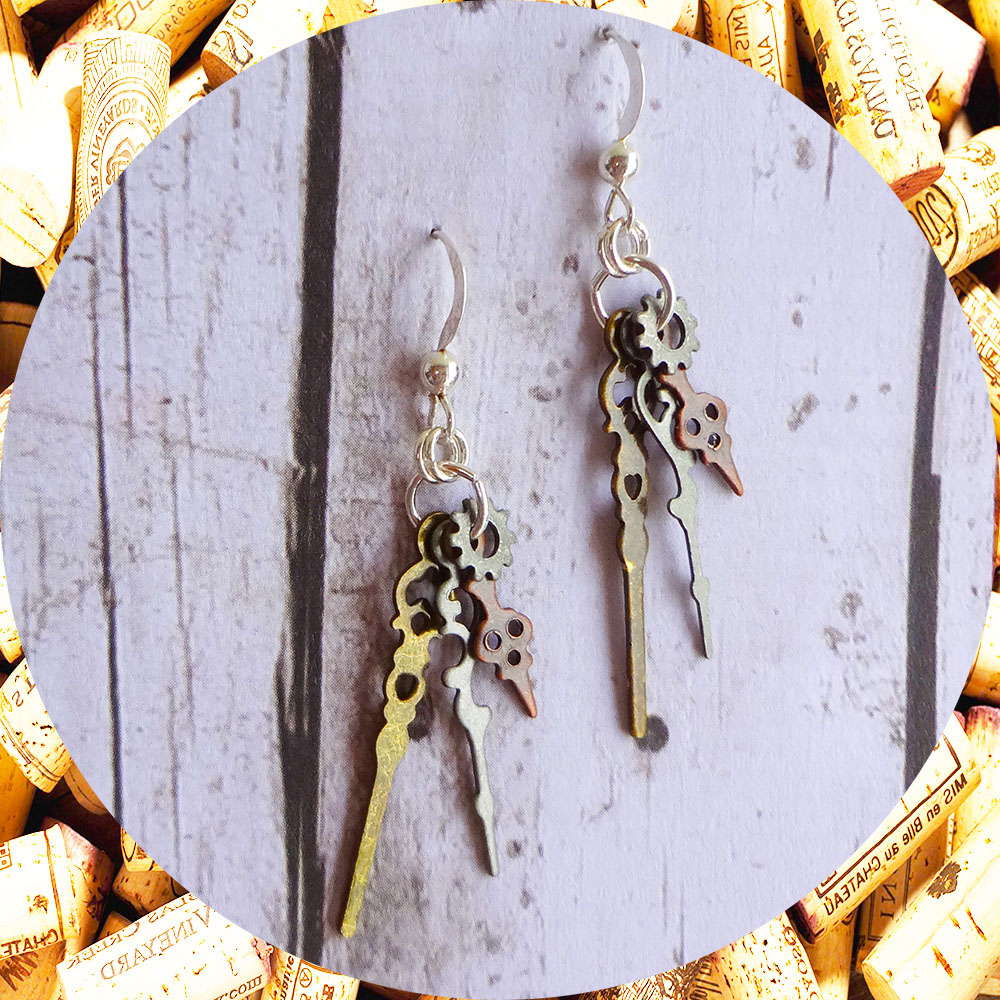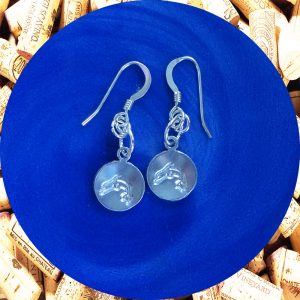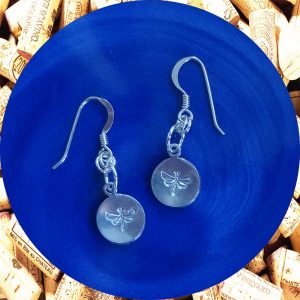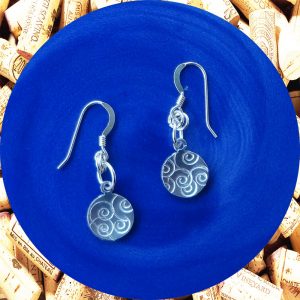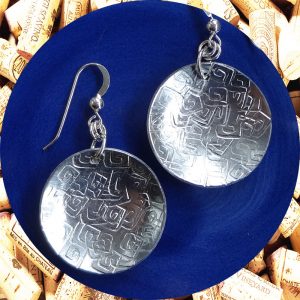Industrial Chic Small Tri-metal Clock Hand Earrings
$14.95
Handcrafted Industrial Chic Small Tri-metal Clock Hand Earrings. These timeless little beauties are perfect for any occasion. Each pair is furnished with Sterling Silver hooks
Description
- Industrial Chic Small Tri-metal Clock Hand Earrings are approximately 5 mms by 30 mms and are created using a mix of antiqued finished Nickel, Brass, and Copper metal clock hands and small gears.
- Each piece is one hundred percent unique as each is individually handcrafted.
- An extremely lightweight and durable piece of wearable art.
- These Industrial Chic Small Tri-metal Clock Hand Earrings are part of my Industrial Chic line and, although it was not my inspiration, they are often likened to the Steampunk movement. Steampunk is a retrofuturistic subgenre of science fiction or science fantasy that incorporates technology and aesthetic designs inspired by 19th-century industrial steam-powered machinery.
- These little jewels should give you years and years of loving wear.
- The ear wire is a sterling silver flat fishhook (shepherd hook) with an open loop.
- Kimi Designs also offers a pair of plastic backs with each pair of Small Tri-metal Clock Hand Earrings.
Discovery of Nickel
Dr. Doug Stewart
Nickel is present in metallic meteorites and so has been in use since ancient times.
Artifacts made from metallic meteorites have been found dating from as early as 5000 BC – for example, beads in graves in Egypt.
Iron is the most abundant element in metallic meteorites, followed by nickel.
It was not until the 1750s that nickel was discovered to be an element.
In the 1600s, a dark red ore, often with a green coating, had been a source of irritation for copper miners in Saxony, Germany. They believed the dark red substance was an ore of copper, but they had been unable to extract any copper from it.
In frustration, they had named it ‘kupfernickel’ which could be translated as ‘goblin’s copper’ because clearly, from the miners’ point of view, at any rate, there were goblins or little imps at work, preventing them extracting the copper.
Between 1751 and 1754, the Swedish chemist Axel Cronstedt carried out a number of experiments to determine the true nature of kupfernickel. (We now know that kupfernickel is nickel arsenide, NiAs.)
After finding that its chemical reactions were not what he would have expected from a copper compound, he heated kupfernickel with charcoal to yield a hard, white metal, whose color alone showed it could not be copper. Its properties, including its magnetism, led him to conclude that he had isolated a new metallic element.
Cronstedt named the new element nickel, after the kupfernickel from which he had isolated it.
There is a satisfying symmetry in this discovery. Cronstedt was a pupil of George Brandt, who had discovered cobalt, which sits immediately to the left of nickel in the periodic table.
The names of both elements have their origins in the frustrations of miners caused by metal-arsenic ores: nickel arsenide and cobalt arsenide. Cobalt’s name is derived from the German ‘kobold’ meaning ‘goblin’ – a close relative of the creature from which nickel’s name was derived.
In cobalt’s case, miners mistakenly thought the ore contained silver and called the ore kobold in frustration at the wicked goblins who they believed were preventing them from getting silver from the ore.
In the early twentieth century, Ludwig Mond patented a process using nickel carbonyl to purify nickel. This process is still used today.
Brass is an alloy of:
Copper
- Elemental Symbol: Cu
- Atomic Number: 29
- Atomic Mass: 63.546
Copper Element Data Zone
- Classification: Copper is a transition metal
- Color: orange-red
- Atomic weight: 63.546
- State: solid
- Melting point: 1084.62 oC, 1357.77 K
- Boiling point: 2560 oC, 2833 K
- Electrons: 29
- Protons: 29
- Neutrons in most abundant isotope: 34
- Electron shells: 2,8,18,1
- Electron configuration: [Ar] 3d10 4s1
- Density @ 20oC: 8.96 g/cm3
& Zinc
- Elemental Symbol: Zn
- Atomic Number: 30
- Atomic Mass: 65.39
Zinc Element Data Zone
- Classification: Zinc is a transition metal
- Color: bluish silver
- Atomic weight: 65.41
- State: solid
- Melting point: 419.53 oC, 692.68 K
- Boiling point: 910 oC, 1183 K
- Electrons: 30
- Protons: 30
- Neutrons in most abundant isotope: 34
- Electron shells: 2,8,18,2
- Electron configuration: [Ar] 3d10 4s2
- Density @ 20oC: 7.14 g/cm3
Copper
- Elemental Symbol: Cu
- Atomic Number: 29
- Atomic Mass: 63.546
Discovery of Copper by Dr. Doug Stewart
- Of all the metals, copper is the one most likely to be found in its native state, often released by the chemical reaction of its ores.
- Although only small amounts of native copper can be found, there was enough of it for our ancestors to discover the metal and begin using it.
- Copper has been used by humans for as many as ten thousand years. Beads made from native copper dating from the eighth millennium BC have been found in Turkey.
- Crucibles and slags found in Europe suggest that smelting of copper (producing the metal from its ores) took place in the fifth millennium BC.
- Copper mining and smelting were commonplace by 4500 BC in the Balkans – Bulgaria, Greece, Serbia and Turkey.
- The Copper Age sits between the Neolithic (Stone) and Bronze Ages. It took place at different times in different cultures, when people began using copper tools alongside stone tools.
- The Copper Age was followed by the Bronze Age, when people learned that by adding tin to copper, a harder metal that is also more easily cast was formed. Again this happened at different times in different locations in the world.
- The word copper is derived from the Latin word ‘cuprum’ meaning ‘metal of Cyprus’ because the Mediterranean island of Cyprus was an ancient source of mined copper.
- The element symbol Cu also comes from ‘cuprum.’
Copper Element Data Zone
- Classification: Copper is a transition metal
- Color: orange-red
- Atomic weight: 63.546
- State: solid
- Melting point: 1084.62 oC, 1357.77 K
- Boiling point: 2560 oC, 2833 K
- Electrons: 29
- Protons: 29
- Neutrons in most abundant isotope: 34
- Electron shells: 2,8,18,1
- Electron configuration: [Ar] 3d10 4s1
- Density @ 20oC: 8.96 g/cm3

